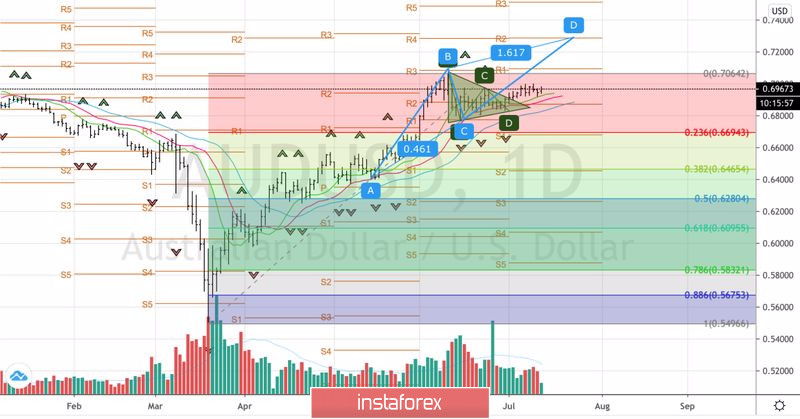When something goes wrong, it is better to exit the position or close part of it and wait for confirmation signals. More than 20% of the AUD/USD rally from the levels of the March bottom hit a wall of misunderstanding: despite the Reserve Bank's optimism and the impressive support of the Chinese stock market, the "Aussie" is in no hurry to go north. Hedge funds are afraid of a repeated lockdown of the entire economy of the Green continent and prefer to take a wait-and-see position. Especially since the release of data on the Australian labor market for June and the GDP of the Middle Kingdom for the second quarter can rock the boat in any direction.
The second wave of COVID-19, contributing to the closure of the state of Victoria, which accounts for a quarter of the contribution to the gross domestic product, called into question the idea of a faster recovery of the Green continent's economy compared to its foreign counterparts. According to RBA Governor Philip Lowe, the return of GDP to the trend will depend on the localization of the coronavirus. Let the growth of leading indicators indicate that the worst for the world economy is over, and the recession in Australia was not as deep as expected. The Reserve Bank at its last meeting left the cash rate at the same level of 0.25% and did not use verbal interventions, although a few days before, its head noted that it is difficult to argue that the rate of the "Aussie" is overvalued.
Investors are eagerly awaiting data on the Green continent's labor market, which is scheduled for release on July 16. In April-May, the country lost 800 thousand jobs, and the unemployment rate rose to 7.1%. In June, experts expect it to increase to 7.2% and forecast employment growth of 100 thousand. At the same time, Treasurer Josh Frydenberg claims that if you take into account people who left the idea of finding a job, the unemployment rate will be 13.3%.
Dynamics of Australian labor market indicators

If the actual data on the labor market is better than the forecast, the "bulls" for AUD/USD will get a reason to attack. It is expected to continue after the release of statistics on Chinese GDP. The economy of the Middle Kingdom, after sagging by 6.8% in the first quarter, may grow by 2.1% y/y in the second. If it follows the path of a V-shaped recovery, the currencies of those countries for which China is a key trading partner and the main market will benefit. "Aussie" is on this list.
The main problems for the Australian dollar could arise from the US stock market, but this is unlikely to happen. Yes, the number of infected COVID-19 in the US has exceeded 60 thousand per day, but the death rate does not want to grow. Yes, Wall Street Journal experts expect corporate profits to fall by 45% in April-June, but the spread of their forecasts is so large that the value of the median estimate is reduced. Moreover, the best data will support not only the S&P 500 but also the AUD/USD bulls.
Technically, there is a consolidation on the daily chart of the pair, which sooner or later is replaced by a trend. A break in the resistance by 0.7 and 0.7055 will allow you to form long positions with a target of 161.8% on the AB=CD pattern. It corresponds to the level of 0.727.
AUD/USD, the daily chart

 English
English 
 Русский
Русский Bahasa Indonesia
Bahasa Indonesia Bahasa Malay
Bahasa Malay ไทย
ไทย Español
Español Deutsch
Deutsch Български
Български Français
Français Tiếng Việt
Tiếng Việt 中文
中文 বাংলা
বাংলা हिन्दी
हिन्दी Čeština
Čeština Українська
Українська Română
Română

